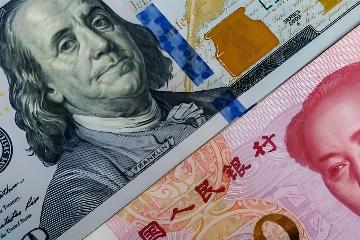On December 19, 2024, the Federal Reserve made a significant announcement regarding its monetary policy, lowering the target range for the federal funds rate to between 4.25% and 4.50%. This was the third rate cut of the year and came after a series of adjustments over the previous three monthsHowever, what initially seemed like a softening gesture had a much firmer underlying message: the anticipated number of rate cuts in 2025 was revised down from four to just two.
The implications of this decision are profoundFederal Reserve Chairman Jerome Powell explicitly stated that while inflation rates have decreased from their peak, they have not yet reached the targeted 2%. Measures within their policy, such as imposing tariffs and reducing taxes, as well as the potential for a rebound in inflation, necessitate a cautious approach.
The global markets immediately reacted to the news, sending shockwaves throughout the financial landscape
The three major U.S. stock indices fell, gold prices dipped below $2,610, and the dollar index surged dramatically, placing severe pressure on non-U.S. currenciesThis reaction illustrates more than just a statistical change; it underscores the deep-seated anxiety about inflation and a wary outlook on the global economy.
Tracing back through the past decades of Federal Reserve rate-cutting cycles, there has often been a pattern where the markets would enjoy a brief uplift as a result of lower interest ratesYet, this time, the dynamics may be differentThe reduction was modest, just 25 basis points, raising questions regarding whether it would provide sufficient momentum for the U.S. economyFurthermore, with the tightening future expectations—shifting from four cuts to only two—the hesitation surrounding the sustainability of accommodative monetary policy has become palpable.
Investment institutions have voiced their opinions, suggesting that this latest rate cut might be more symbolic, representing a form of easing, rather than a robust push to invigorate the economy
- Dollar/Yen Hits Five-Month High
- Slight Decline in the Dollar Index
- AI Revolutionizes Home Decoration
- The Secret Behind Visual China's Stock Surge
- Dollar Retreats, Oil Prices Rebound
Surprisingly, instead of weakening, the dollar strengthened post-announcement, as investors sought safe-haven assets amid global uncertaintiesOn December 19, the dollar index exceeded 106, marking one of the highest levels seen in the past year.
This scenario creates additional challenges for emerging economies that are already grappling with external debt obligationsIn the case of China, the pressure of a strengthening dollar translates into increased burdens on debt repaymentThe value of the renminbi, having depreciated from 7.1 in early 2024 to 7.4 by year’s end, could potentially drop further to between 7.6 and 7.8 in the coming monthsWhile this depreciation might enhance the competitiveness of Chinese exports, particularly in sectors like textiles and electronics, it also raises concerns over capital outflows and inflationary pressures entering the domestic market.
As the Federal Reserve embarks on its rate-cutting cycle, there arises a greater scope for China's monetary policy maneuvers
Industry experts predict a possible reduction of two interest rate cuts amounting to 50 basis points by 2025. Additionally, a lower reserve requirement ratio could be implemented, aiming for a cumulative drop of 100 basis points within the yearThis more relaxed monetary policy approach not only alleviates the financing pressure on small and medium enterprises but also injects new momentum into economic recovery.
Historically, real estate markets worldwide have responded to U.S. rate cutsChina's property market stands to benefit significantly from this situation, with early signs of stabilization in home prices, particularly in tier-one citiesIn December 2024, cities such as Beijing and Shenzhen recorded a month-on-month price increase of 1.2% to 1.5%, reaching new highs not seen in nearly two yearsThe policy environment governing the housing market continues to improve, with indications that further favorable measures regarding mortgage interest rates may emerge.
Looking ahead to 2025, the stability of the housing market may evolve into a gradual warming, leading to tier-one cities potentially spearheading price increases nationwide
However, the Fed's decision to cut rates contributes to a climate of uncertainty in global capital marketsIn contrast, China's A-shares may chart their own course amidst the turbulence.
By 2025, a primary objective to stabilize the stock market is anticipatedThe volatility existing in the U.S. stock market may exert immediate pressure on capital flows into China's markets, but overall, it is expected that A-shares will experience fluctuations within a relatively high range, projected to oscillate between 3,000 and 4,000 pointsNotably, U.S. policies such as imposing tariffs and incentivizing domestic manufacturing may provide short-term industry protection, yet they pose the risk of escalating long-term inflationary pressures that threaten the Fed's rate-cutting agenda.
The cautious stance adopted by Powell serves as a crucial reminder to the markets: an inappropriate blend of policies may compel the Federal Reserve to slow down its rate cuts or even reconsider adopting rate hikes.
In conclusion, while the Fed's rate cuts provide a temporary reprieve for the global economy, the underlying firm signals indicate a future fraught with uncertainty
